Cause of death Heart attack Name Clayton Moore | Occupation Actor Role Actor Years active 1934–1999 Known for Lone Ranger | |
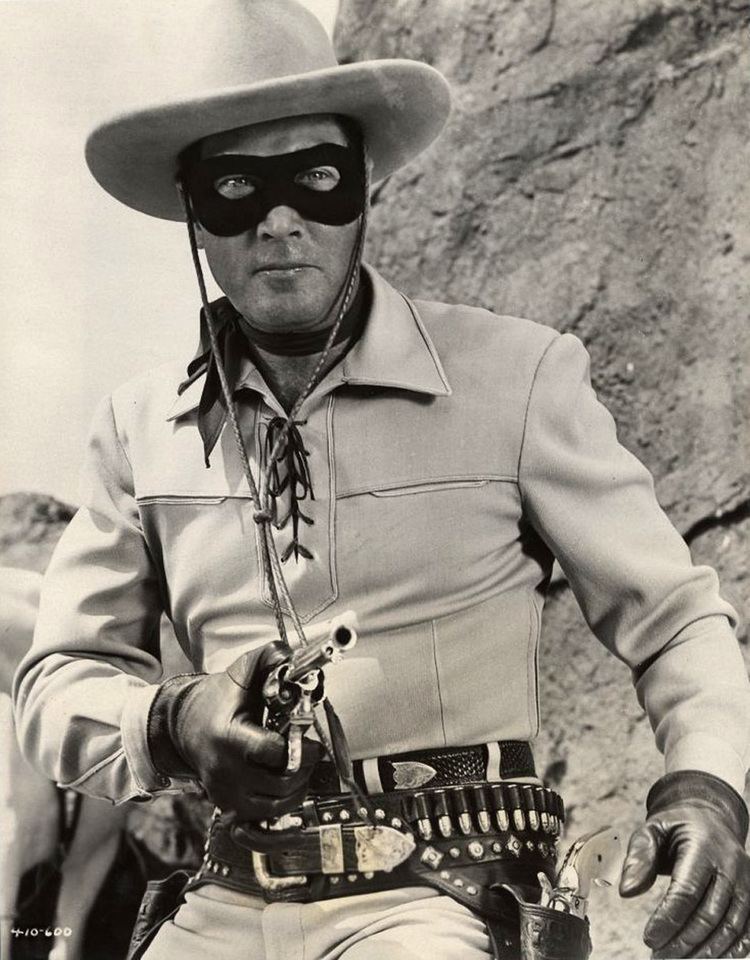 | ||
Full Name Jack Carlton Moore Died December 28, 1999, West Hills, California, United States Buried Forest Lawn Memorial Park, Los Angeles, California, United States Spouse Clarita Moore (m. 1992–1999) Movies and TV shows Similar People Jay Silverheels, John Hart, Fran Striker, George W Trendle, William Witney | ||
9 14 14 clayton moore interview
Clayton Moore (born Jack Carlton Moore, September 14, 1914 – December 28, 1999) was an American actor best known for playing the fictional western character the Lone Ranger from 1949–1951 and 1954–1957 on the television series of the same name and two related movies from the same producers.
Contents
- 9 14 14 clayton moore interview
- FAMOUS GRAVE TOUR The Lone Ranger Actor Clayton Moore At Forest Lawn In Glendale CA
- Early years and military service
- The Lone Ranger
- Lawsuit over public appearances
- Other
- Death
- Autobiography
- References
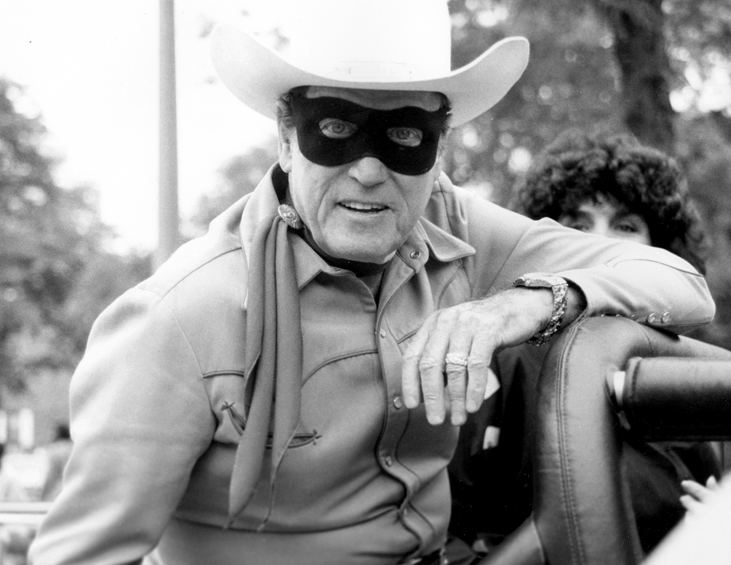
FAMOUS GRAVE TOUR: The Lone Ranger Actor Clayton Moore At Forest Lawn In Glendale, CA
Early years and military service
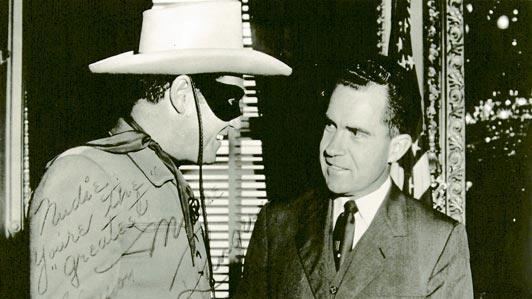
Born in Chicago, Illinois, in 1914, Moore was the youngest of three sons of Theresa (née Fisher) and Sprague Moore. Moore's father, according to the federal census of 1930, was a native of New York and supported his family in Chicago by working as a real estate broker. That same census also documents that a full-time maid, Amelia Hirsch, lived with the Moore family, an indication of the household's relative prosperity at the time.
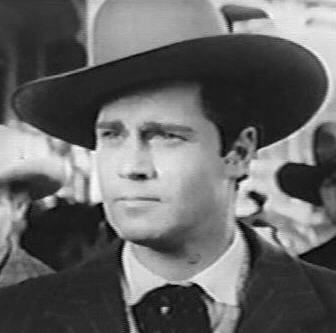
Highly athletic as a boy, "Jack" became a circus acrobat by age eight; and later, in 1934, he appeared at the Century of Progress exposition in Chicago with a trapeze act. He graduated from Stephen K. Hayt Elementary School, Sullivan Junior High School, and Senn High School on the far North Side of Chicago. Moore as a young man also worked successfully as a John Robert Powers model. Moving to Hollywood in the late 1930s, he worked as a stunt man and bit player between modeling jobs. Moore in his 1996 autobiography I Was That Masked Man noted that Hollywood producer Edward Small persuaded him around 1940 to adopt the stage name "Clayton". Subsequently, he was cast as an occasional player in B Westerns and the lead in four Republic Studio cliffhangers and in two films for Columbia Pictures. Moore during World War II enlisted in the U.S. Army Air Forces and served with that branch's First Motion Picture Unit making training films, such as Target-Invisible, in which Moore co-starred with fellow actor Arthur Kennedy.
The Lone Ranger

In 1949, Moore's work in the Ghost of Zorro serial drew the attention of George Trendle, co-creator and producer of a popular radio series titled The Lone Ranger. The series' running plot involved the exploits of a mysterious former Texas Ranger, the sole survivor of a six-Ranger posse ambushed by a gang of outlaws, who roamed the West with his Indian companion Tonto to battle evil and help the downtrodden. When Trendle brought the radio program to television, Moore landed the title role. With the "March of the Swiss Soldiers" finale from Rossini's William Tell overture as their theme music, Moore and co-star Jay Silverheels made history as the stars of the first Western written specifically for television. The Lone Ranger soon became the highest-rated program to that point on the fledgling ABC network and its first true hit. It earned an Emmy Award nomination in 1950.
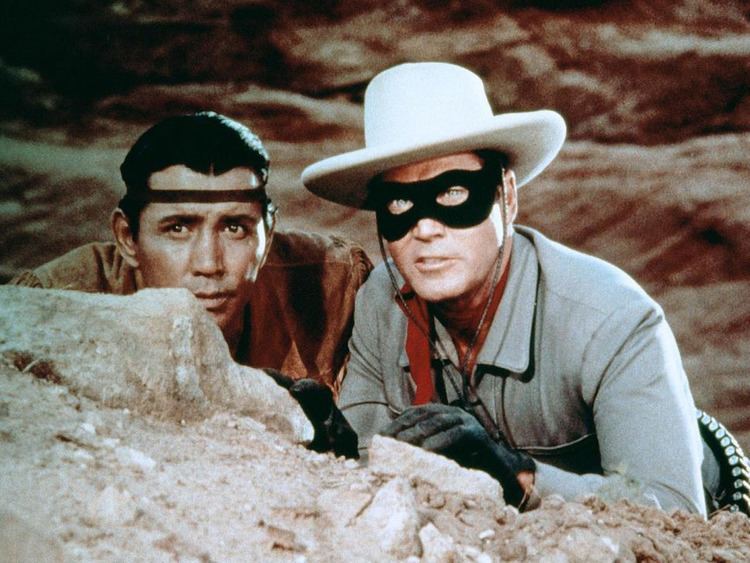
Moore was replaced in the third season by John Hart, reportedly due to a contract dispute, but he returned for the final two seasons. Moore later said he received no explanation from the producers as to why he was replaced or why he was rehired. The fourth season of The Lone Ranger was again filmed in black and white; however, the fifth and final season of the series was the only one to be shot in color. In all, Moore starred in 169 of the 221 episodes produced.
Moore appeared in other television series during his Lone Ranger run, including a 1952 episode of Bill Williams' syndicated Western The Adventures of Kit Carson. He guest-starred in two episodes of Jock Mahoney's series The Range Rider in 1952 and 1953. Silverheels and he also starred in two feature-length Lone Ranger motion pictures. After completion of the second feature, The Lone Ranger and the Lost City of Gold, in 1958, Moore began 40 years of personal appearances, TV guest spots, and classic commercials as the legendary masked man. Silverheels joined him for occasional reunions during the early 1960s. Throughout his career, Moore expressed respect and love for Silverheels.
Lawsuit over public appearances
In 1979, the owner of the Ranger character, Jack Wrather, obtained a court order prohibiting Moore from making future appearances as The Lone Ranger. Wrather anticipated making a new film version of the story and did not want the value of the character being undercut by Moore's appearances. Wrather did not want to encourage the belief that the 65-year-old Moore would be playing the role in the new picture. This move proved to be a public relations disaster. Moore responded by changing his costume slightly and replacing the Domino mask with similar-looking Foster Grant wraparound sunglasses, and by counter-suing Wrather. He eventually won the suit, and was able to resume his appearances in costume, which he continued to do until shortly before his death. For a time, he worked in publicity tie-ins with the Texas Rangers baseball team. (Wrather's new motion picture of the character, The Legend of the Lone Ranger, was released in 1981 and was a critical and commercial failure.)
Moore often was quoted as saying he had "fallen in love with the Lone Ranger character" and strove in his personal life to take The Lone Ranger Creed to heart. This, coupled with his public fight to retain the right to wear the mask, linked him inextricably with the character. In this regard, he was much like another cowboy star, William Boyd, who portrayed the Hopalong Cassidy character. Moore was so identified with the masked man that he is the only person on the Hollywood Walk of Fame, as of 2006, to have his character's name along with his on the star, which reads, "Clayton Moore — The Lone Ranger". He was inducted into the Stuntman's Hall of Fame in 1982 and in 1990 was inducted into the Western Performers Hall of Fame at the National Cowboy & Western Heritage Museum in Oklahoma City, Oklahoma. Moore also was awarded a place on the Western Walk of Fame in Old Town Newhall, California.
Other
Jay Thomas was an annual guest on The Late Show with David Letterman during the Christmas season, where he told a true story about how he met Moore.
Death
Clayton Moore died on December 28, 1999, in a West Hills, California, hospital after suffering a heart attack at his home in nearby Calabasas. He was survived by his fourth wife, Clarita Moore, and an adopted daughter, Dawn Angela Moore. Moore was buried at Forest Lawn Memorial Park in Glendale.
